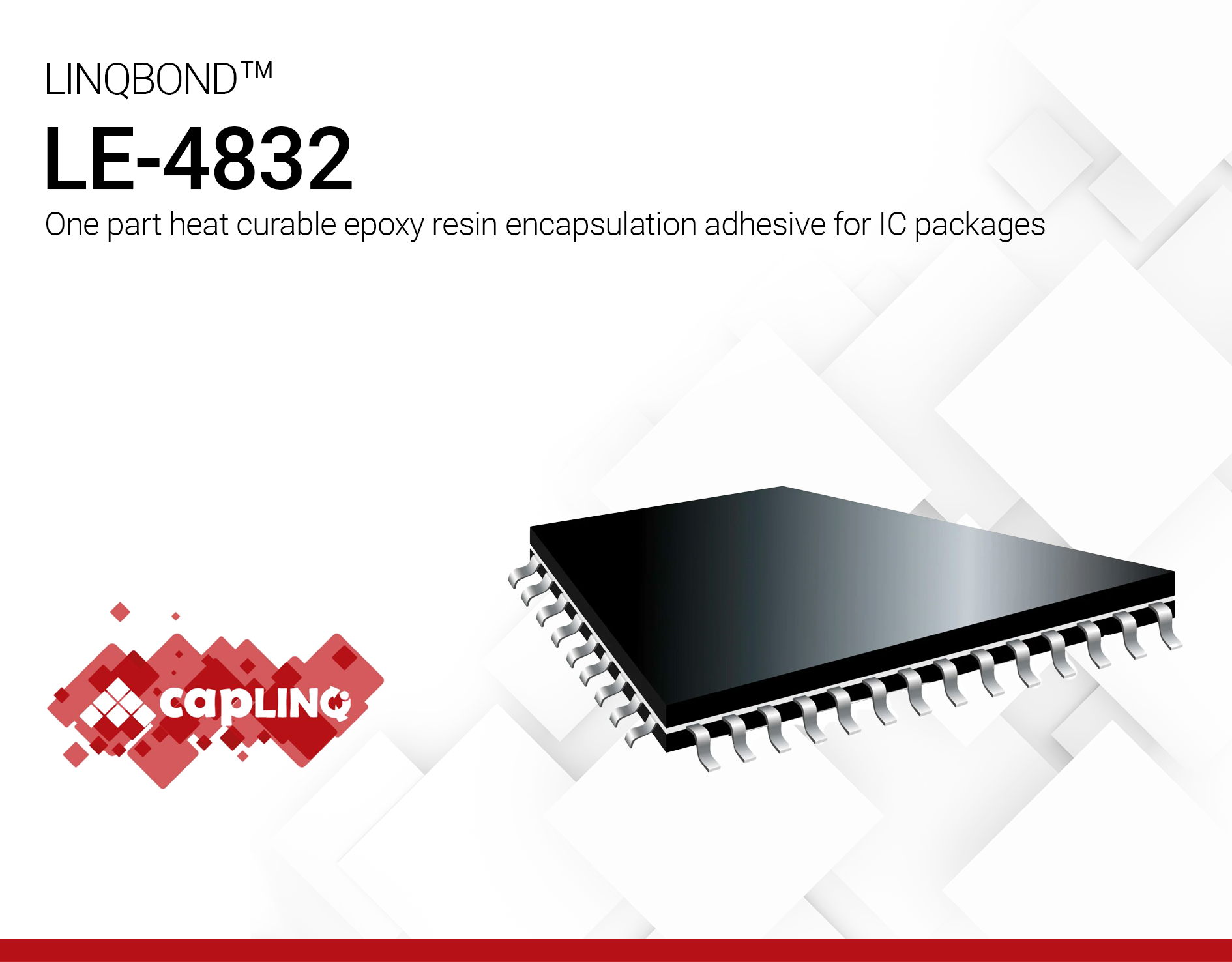LINQBOND LE-4832 | one part epoxy resin
- Excellent low-temperature storage stability
- Good thermal resistance
- Stable viscosity
Product Description
LINQBOND LE-4832 is a one-part packaging adhesive specifically developed for semiconductor applications and can be used as an adhesive for LCD driver ICs in COB applications. It can be safely stored at 0 °C for 6 months without any degradation in quality or performance.
LINQBOND LE-4832 achieves a strong hardening effect at standard room temperature. It has very stable viscosity, allowing for easy adjustment to match different glue dispensing equipment and air pressure requirements. It is stable even after thermal cycling between –55 °C and 125 °C, ensuring the integrity of IC chips even under extreme temperature conditions.
Technical Specifications
| General Properties | |
| Specific Gravity Specific Gravity Specific gravity (SG) is the ratio of the density of a substance to the density of a reference substance; equivalently, it is the ratio of the mass of a substance to the mass of a reference substance for the same given volume. For liquids, the reference substance is almost always water (1), while for gases, it is air (1.18) at room temperature. Specific gravity is unitless. | 1.57±0.1 |
| Thermal Properties | |
| Glass Transition Temperature (Tg) Glass Transition Temperature (Tg) The glass transition temperature for organic adhesives is a temperature region where the polymers change from glassy and brittle to soft and rubbery. Increasing the temperature further continues the softening process as the viscosity drops too. Temperatures between the glass transition temperature and below the decomposition point of the adhesive are the best region for bonding. The glass-transition temperature Tg of a material characterizes the range of temperatures over which this glass transition occurs. | 139 °C |
| Electrical Properties | |
| Volume Resistivity Volume Resistivity Volume resistivity, also called volume resistance, bulk resistance or bulk resistivity is a thickness dependent measurement of the resistivity of a material perpendicular to the plane of the surface. | >1.0 (E15) Ohms⋅cm |
| Chemical Properties | |
| Water Absorption | 0.3 % |
| Physical Properties | |
| Viscosity Viscosity Viscosity is a measurement of a fluid’s resistance to flow. Viscosity is commonly measured in centiPoise (cP). One cP is defined as the viscosity of water and all other viscosities are derived from this base. MPa is another common unit with a 1:1 conversion to cP. A product like honey would have a much higher viscosity -around 10,000 cPs- compared to water. As a result, honey would flow much slower out of a tipped glass than water would. The viscosity of a material can be decreased with an increase in temperature in order to better suit an application | 75,000–110,000 mPa.s |
| Young's modulus | 7243 MPa |
Additional Information
Precautions for use
- This product needs to be stored at low temperatures and at dry places. The shelf life will vary depending on the storage conditions.
- When the material is take out from refrigeration, thaw it first prior to use. Keep in an airtight container at room temperature. After thawing for at least 6 to 8 hours, open and then use.
- Maintain a clean and ventilated workplace, using extraction trunks when necessary.
- Wear appropriate protective equipment and minimize direct contact with the human body. Refer to the Material Safety Data Sheet (SDS) before use.
Please note that the provided information is based on available data and typical conditions. For specific applications and detailed test results, refer to the actual test data and conduct appropriate certifications.
Storage and Handling
Store in a ventilated, dry, and clean environment below 25 °C. Keep away from fire and heat sources. It is strictly forbidden to store in outdoor environments. Shelf life can be extended by using cold storage.



